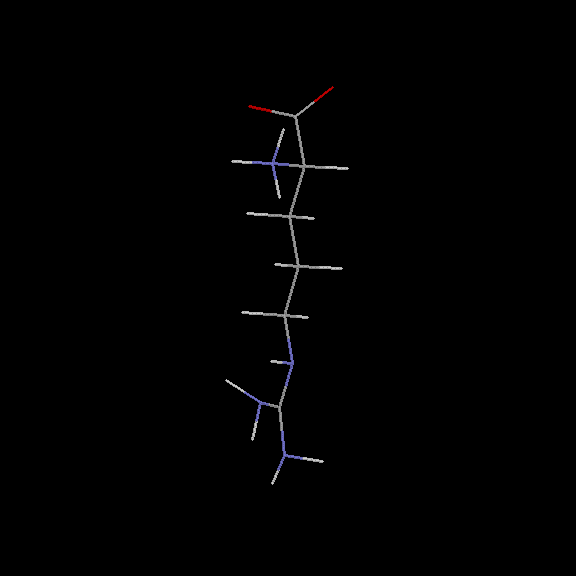L-arginine
L-arginine is a vital amino acid with a crucial role in various physiological processes within the human body. Structurally, it serves as a precursor for the synthesis of nitric oxide (NO), a potent vasodilator, playing a key role in regulating blood flow and vascular tone. Additionally, L-arginine is involved in the synthesis of creatine, an essential compound for energy production and muscle function.
Beyond its role in protein synthesis, L-arginine is instrumental in supporting the immune system, promoting wound healing, and assisting in the removal of ammonia from the body. Furthermore, it serves as a substrate for the production of various important molecules, including polyamines, proline, and glutamate, highlighting its significance in the broader landscape of cellular metabolism and physiological regulation.
Studies have suggested that L-arginine supplementation may have potential benefits in diverse health aspects, including cardiovascular health, immune function, and exercise performance. However, it is essential to note that excessive intake of L-arginine may lead to adverse effects, such as gastrointestinal disturbances and alterations in potassium levels.
Sources rich in L-arginine include various protein-rich foods, such as meat, poultry, fish, dairy products, nuts, and seeds. Its significance in promoting overall health and well-being underscores the importance of maintaining adequate levels of L-arginine within the body to support optimal physiological functioning.
L-arginine (IUPAC-IUBMB abbreviation: Arg and R) represents a crucial α-amino acid essential for various physiological processes. Structurally, the molecule is distinguished by the presence of a guanidine group at the terminal end of its side chain, rendering it a highly basic residue that carries a positive charge within proteins. Notably, the isoelectric point of L-arginine is recorded at 10.76, underscoring its characteristic behavior in diverse biological environments.
While not classified as an essential amino acid for humans, L-arginine's production within the body can be influenced by the individual's health status, potentially necessitating dietary supplementation. This particular feature highlights the significance of maintaining an adequate dietary intake of L-arginine to support optimal physiological functioning and ensure a balanced amino acid profile within the body.
In addition to its role in protein synthesis, L-arginine assumes a critical role in the synthesis of various important molecules, including nitric oxide (NO) and creatine, thereby contributing to the regulation of vascular tone, blood flow, and energy metabolism. Furthermore, L-arginine serves as a vital substrate for the synthesis of polyamines, proline, and glutamate, accentuating its role in various biochemical pathways governing cellular metabolism and physiological regulation.
The diverse roles of L-arginine within the body, ranging from its involvement in protein synthesis to its significance in the synthesis of essential biomolecules, underscore its crucial role in maintaining overall physiological balance and cellular homeostasis. Maintaining appropriate levels of L-arginine through dietary sources remains crucial in supporting optimal physiological function and promoting overall health and well-being.

Synonyms :
- L-ARGININE
- Arg
- R
Config Rule :
config('L-arginine',[
substituent(aminoacid_L_backbone),
substituent(propodiylguanidyl),
linkage(from(aminoacid_L_backbone,car(1)),
to(propodiylguanidyl,car(1)),
down,single)]).
%%%% Substituent Config Rules for compound 'L-arginine' %%%%
config(aminoacid_L_backbone,[
left(amino),
right(hyd),
top(carboxyl),
center(car(1))]).
config(propodiylguanidyl,[
substituent(propodiyl),
substituent(guanidyl),
linkage(from(propodiyl,car(3)),
to(guanidyl,nit(1)),
nil,single)]).
%%%% Substituent Config Rules for compound propodiylguanidyl %%%%
config(propodiyl,[
top(methandiyl(1,empty)),
center(methandiyl),
bottom(methandiyl(3,empty))]).
Smiles String :
[C@2H]([NH3+])([C](=[O])[O-])[C@2H2][C@2H2][C@2H2][NH][C](=[NH2])[NH2] 'L-arginine'
Fischer Diagram :

Terminal :
% 'L-arginine'
c(1,12,(0,chiral))-[n(1,left)~,h(1,right)~,c(2,up)~,c(3,down)~],
c(2,12,(0,nonchiral))-[o(1,nil)?,o(2,nil)?,c(1,down)~],
c(3,12,(0,nonchiral))-[c(4,left)~,h(7,right)~,c(1,up)~,h(8,down)~],
c(4,12,(0,nonchiral))-[c(5,left)~,c(3,right)~,h(5,up)~,h(6,down)~],
c(5,12,(0,nonchiral))-[h(9,left)~,c(4,right)~,n(2,up)~,h(10,down)~],
c(6,12,(0,nonchiral))-[n(4,nil)?,n(3,nil)?,n(2,nil)?],
h(1,1,(0,nonchiral))-[c(1,left)~],
h(2,1,(0,nonchiral))-[n(1,right)~],
h(3,1,(0,nonchiral))-[n(1,down)~],
h(4,1,(0,nonchiral))-[n(1,up)~],
h(5,1,(0,nonchiral))-[c(4,down)~],
h(6,1,(0,nonchiral))-[c(4,up)~],
h(7,1,(0,nonchiral))-[c(3,left)~],
h(8,1,(0,nonchiral))-[c(3,up)~],
h(9,1,(0,nonchiral))-[c(5,right)~],
h(10,1,(0,nonchiral))-[c(5,up)~],
h(11,1,(0,nonchiral))-[n(2,nil)~],
h(12,1,(0,nonchiral))-[n(3,nil)~],
h(13,1,(0,nonchiral))-[n(3,nil)~],
h(14,1,(0,nonchiral))-[n(4,nil)~],
h(15,1,(0,nonchiral))-[n(4,nil)~],
n(1,14,(1,nonchiral))-[h(2,left)~,c(1,right)~,h(3,up)~,h(4,down)~],
n(2,14,(0,nonchiral))-[c(6,nil)?,h(11,nil)~,c(5,down)~],
n(3,14,(3.333333333333333E-01,nonchiral))-[h(12,nil)~,h(13,nil)~,c(6,nil)?],
n(4,14,(3.333333333333333E-01,nonchiral))-[h(14,nil)~,h(15,nil)~,c(6,nil)?],
o(1,16,(-5.0E-01,nonchiral))-[c(2,nil)?],
o(2,16,(-5.0E-01,nonchiral))-[c(2,nil)?]
The Terminals for all the Config Rules are in Prolog Definite Clause Grammar (DCG) form.They can be checked in the Manual here.
The compound's PDB file can be seen here.
